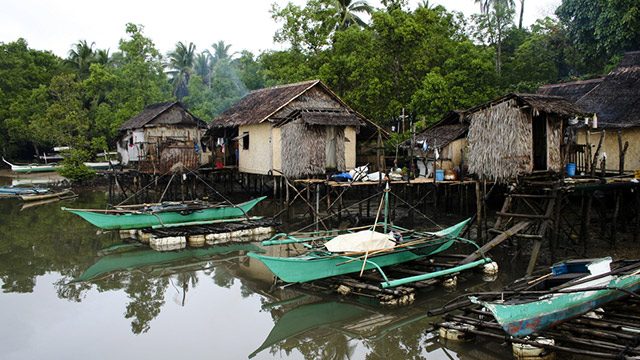SUMMARY
This is AI generated summarization, which may have errors. For context, always refer to the full article.

MANILA, Philippines – In a recent study released by Verisk Maplecroft, out of 100 cities that have the greatest risks to natural disasters, 21 of them are in the Philippines. (READ: 8 of 10 of the world’s most disaster-prone cities in PH).
The study also showed that the Philippines – ranked 80th out of 198 countries for resilience – is considered “high risk,” which is “in part due to entrenched corruption and high levels of poverty.”
The situation, however, is worse in communities in small islands, where, more often than not, there is still a lot to improve on when it comes to infrastructure and facilities.
While the country’s location along the typhoon belt and the Pacific Ocean’s Ring of Fire generally makes it prone to various natural disasters, its vulnerability is worsened by its level of poverty.
Isolated?
“Small islands became our advocacy in the sense that I think a lot of them had been forgotten,” Jorge Ebay from the University of the Philippines-Visayas said during a workshop on post–2015 disaster risk reduction (DRR) framework on Friday, March 6.
Ebay is part of Bangon Gigantes Island Project, a project that started in 2012 which aims to help Gigantes, a small island in Northern Iloilo, to become disaster-resilient despite its location and DRR challenges.
Located in the middle of the sea, it is the farthest among the barangays in Northern Iloilo. This makes communication among the local government units and disaster management offices difficult for Gigantes, Ebay said.
Small island communities, depending on their location from the main islands, can be reached by using small boats that can take 15 minutes to more than an hour. He said this causes the communities in the island to be more vulnerable to disasters than provinces in the mainland.
“They are frequently isolated physically, politically, economically and culturally,” he added.
Vulnerable
Making the isolation worse is the fact that these islands are also prone to various disasters. According to Ebay, small island communities, like Gigantes which has 4 barangays, are exposed to hazards such as typhoons, storm surges, strong winds, landslides, earthquakes, oil spills, red tides, and extreme temperatures and precipitation.
He also said this is aggravated by high poverty, malnutrition and birth rates, and poor sanitation in those areas.
Their houses, health and educational facilities, barangay halls, and religous structures are located in areas which can be affected by those threats as well.
Bridging the gap
Communication is one of the key solutions in addressing the gap between small island communities and mainland provinces, Ebay said.
“So how do we connect those 4 small barangays with mainland Carles? Not by bridging the 4 islands to the mainland but by way of improving communication systems that would allow the 4 barangays to communicate regularly and frequently with the mainland LGUs.”
The organizers installed communication lines and gave out transceiver radios to each local government. Ebay said they are also partnering with the National Telecommunications Commission (NTC) in putting up communication systems in the island.
Experts from the mainland provinces were also brought to Gigantes for them to discuss and share DRR experiences with their barangay officials.
It is also important that disaster information is shared with the small island LGUs. These should be in the vernacular so that they can be easily understood. (READ: How a small Samar town survived deadly storm surges)
They should also conduct trainings and drills on different types of disasters, Ebay said. “They need to develop those capacities so that they can respond effectively to their needs on their own, without relying so much [on] the mainland LGU.”
Next steps
The concerns of small island communities were just among the issues tackled during the workshop attended by different civil society organizations (CSOs).
The involvement of vulnerable sectors such as women, children, and people with disabilities for the next global DRR framework was also raised.
The current global framework for DRR, the Hyogo Framework for Action, adopted by 168 UN member-states at the 2005 World Conference for Disaster Reduction held in Hyogo, Japan ends this year.
According to the Center for Disaster Preparedness, one of the Philippine CSO delegates, the results of the workshop will be submitted during the 3rd World Conference on Disaster Risk Reduction on March 14-18 in Sendai, Japan. – Rappler.com
Add a comment
How does this make you feel?
There are no comments yet. Add your comment to start the conversation.